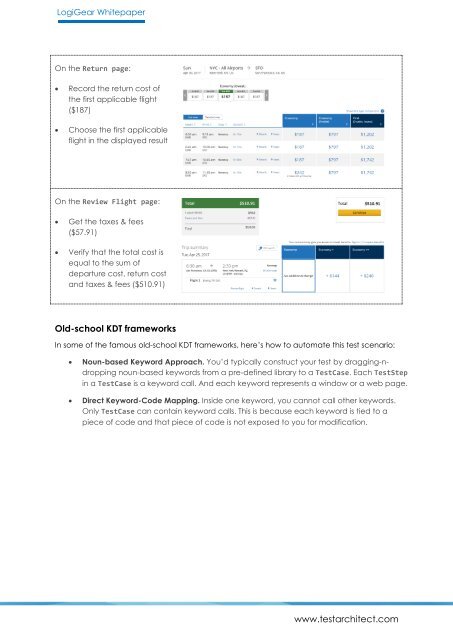The Evolution of Keyword Driven Testing
You also want an ePaper? Increase the reach of your titles
YUMPU automatically turns print PDFs into web optimized ePapers that Google loves.
LogiGear Whitepaper<br />
On the Return page:<br />
<br />
<br />
Record the return cost <strong>of</strong><br />
the first applicable flight<br />
($187)<br />
Choose the first applicable<br />
flight in the displayed result<br />
On the Review Flight page:<br />
<br />
<br />
Get the taxes & fees<br />
($57.91)<br />
Verify that the total cost is<br />
equal to the sum <strong>of</strong><br />
departure cost, return cost<br />
and taxes & fees ($510.91)<br />
Old-school KDT frameworks<br />
In some <strong>of</strong> the famous old-school KDT frameworks, here’s how to automate this test scenario:<br />
<br />
<br />
Noun-based <strong>Keyword</strong> Approach. You’d typically construct your test by dragging-ndropping<br />
noun-based keywords from a pre-defined library to a TestCase. Each TestStep<br />
in a TestCase is a keyword call. And each keyword represents a window or a web page.<br />
Direct <strong>Keyword</strong>-Code Mapping. Inside one keyword, you cannot call other keywords.<br />
Only TestCase can contain keyword calls. This is because each keyword is tied to a<br />
piece <strong>of</strong> code and that piece <strong>of</strong> code is not exposed to you for modification.<br />
www.testarchitect.com


